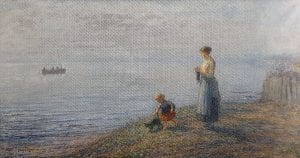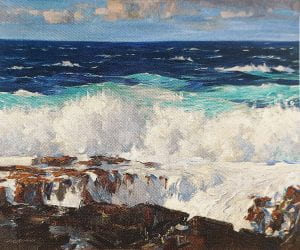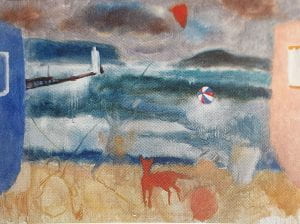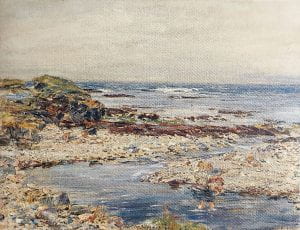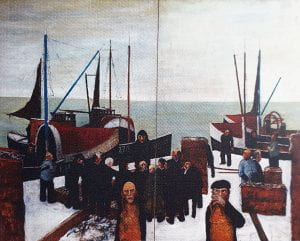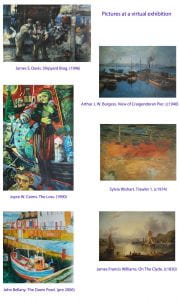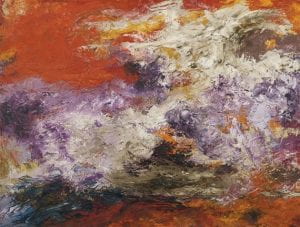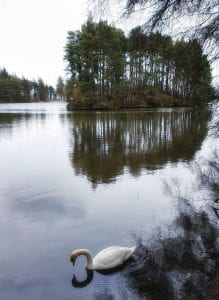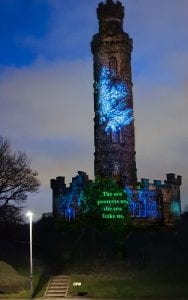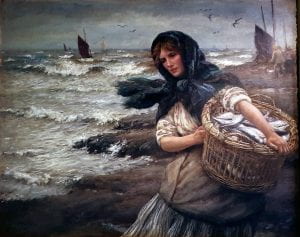
The Fisher Lass portrays a sublime, stormy sea in the background, a socially realistic young woman with a basket of slippery fish in the foreground. She is placed parallel to the waves, dark head receding into pale surrounding highlights, crowned by wheeling gulls. Her contour is fatigued and buffeted by the wind, as are the gulls and the flapping fabrics. The light and shadow, sombre colours and the fine even brushwork create a realistic portrait of a solid person at work in a specific, albeit romanticised, environment. The viewer feels that this person is real and may even peer at her face. Indeed, this was Jessie Hughes of Pittenweem, born in 1892 and hence around 22 years of age when she was painted. She lived in the house nearest the sea. John McGhie (1857 – 1952), the artist, trained in Scotland, England, France and Italy, and eventually settled in Fife. He favoured the ‘plein aire’ approach to capturing landscapes and people at work.
The Scottish Fisheries museum is located next to the harbour in Anstruther, Fife. It holds a varied collection of paintings of Scotland’s seas and many are on permanent display.
The website http://www.scotfishmuseum.org describes the museum’s aim as follows:
‘Situated in a wonderful collection of historic buildings on the harbour of a small and beautiful fishing port, we are a charitable trust which has become a national institution with an international reputation.

Our principal aim, in all of our efforts with regard to the displays in our extensive museum and our many educational and research activities, is to excite informed interest in the development of the Scottish commercial fishing industry among people of all ages in and beyond Scotland. The core story that we have to tell is the history of how, through a constant process of innovation, the Scottish fisheries became such an important part of the lives of so many Scots.’
